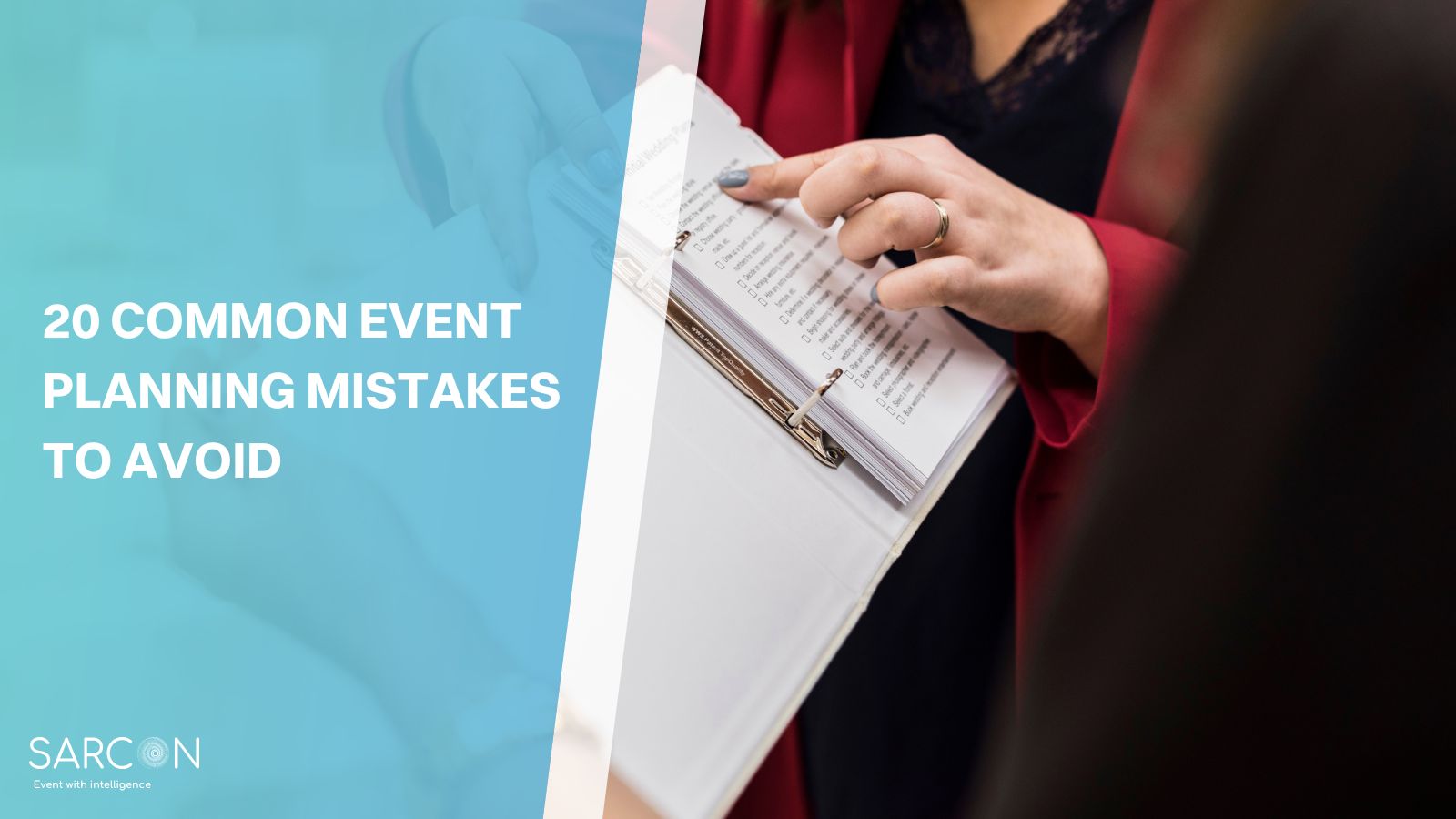Hosting an event is just the beginning. The true challenge—and opportunity—lies in what you do afterwards. Your post-event actions can significantly influence your event’s overall success and its impact on your audience, sponsors, and stakeholders. As we navigate the evolving landscape of events in 2024, having a comprehensive post-event playbook is more crucial than ever. This guide will walk you through essential steps and innovative strategies to maximize your event’s value long after it concludes.
1. Debrief and Evaluate
The first step in your post-event playbook should be a thorough debrief with your team. Collect feedback from all stakeholders, including attendees, speakers, sponsors, and staff. Use surveys, direct interviews, and social media listening to gather insights. Analyzing this feedback will help you understand what worked, what didn’t, and how you can improve future events.
2. Communicate and Follow-Up
Effective communication after the event is key to maintaining engagement. Send out a thank you message to all participants, including attendees, speakers, and sponsors. This communication should be personalized as much as possible to make each recipient feel valued. Additionally, follow up with any leads or contacts made during the event. For attendees, consider sending a summary of key takeaways, access to presentation slides, or exclusive content to keep the conversation going.
3. Leverage Content Marketing
Your event is a goldmine of content that can be repurposed in various formats. Convert presentations and keynotes into blog posts, infographics, podcasts, or videos. This not only extends the life of your event content but also helps reach a wider audience who couldn’t attend in person. Sharing this content across your channels will reinforce key messages and maintain audience engagement.
4. Measure ROI and Impact
Quantifying the success of your event is vital. Assess both qualitative and quantitative metrics to measure ROI. This includes direct revenue, lead generation, brand exposure, attendee satisfaction, and long-term impact on your organization. Use this data to report back to stakeholders and inform your strategy for future events.
5. Innovate for the Future
The events industry is continuously evolving, with new trends and technologies emerging every year. Based on your post-event evaluation, consider how you can innovate and improve. Whether it’s incorporating virtual reality, leveraging AI for personalization, or exploring hybrid event models, staying ahead of trends will position your future events for greater success.
6. Build Community
Finally, consider how you can turn event attendees into a community. Engage with them year-round through social media groups, forums, or exclusive membership clubs. This not only keeps the momentum going but also fosters a loyal base of supporters who are more likely to participate in future events.
Your post-event playbook for 2024 should be a dynamic document that evolves with each event you host. By focusing on these key areas, you can ensure that your events leave a lasting impact and contribute to your long-term success. Remember, the end of your event is just the beginning of its life cycle. With the right strategies in place, you can extend its value far beyond the initial gathering.
7. Utilize Feedback for Continuous Improvement
Feedback is the cornerstone of growth. Beyond the initial debrief, create mechanisms for ongoing feedback collection from your audience and stakeholders. Implementing a structured approach to gather, analyze, and act on feedback ensures continuous improvement. This could involve setting up a dedicated feedback portal or scheduling regular check-ins with key stakeholders. Use this insight to refine your event strategy, address any gaps, and adapt to your audience’s evolving needs.
8. Strengthen Relationships with Sponsors and Partners
Your post-event strategy should include nurturing relationships with sponsors and partners. Share detailed reports on event performance, highlighting metrics that demonstrate value for their investment. Discuss their goals and explore opportunities for deeper engagement in future events. Building a strong rapport with sponsors and partners can lead to more fruitful collaborations and increased support for your next projects.
9. Engage with Your Audience Year-Round
Don’t let the conversation end with the event. Engaging with your audience throughout the year keeps your brand top of mind and builds anticipation for future events. This can be achieved through regular newsletters, social media interactions, and creating a community as mentioned earlier. Offering year-round value through educational content, industry insights, and networking opportunities can transform your event attendees into active community members.
10. Leverage Analytics for Strategic Insights
In the digital age, analytics offer profound insights into your event’s performance and audience behavior. Use analytics tools to track engagement with your post-event content, website traffic, and social media interactions. This data can help you understand your audience’s preferences, the effectiveness of your marketing efforts, and areas for optimization. It also allows you to demonstrate the tangible impact of your event to stakeholders and justify investments in future events.
11. Plan for Scalability
As you refine your event strategy, consider how you can scale your successes. This might mean expanding your event portfolio, exploring new markets, or increasing the size of your events. Scalability involves both logistical planning and strategic marketing efforts to ensure you can maintain quality and engagement as your audience grows.
12. Embracing Technology Trends
Technology plays a pivotal role in the evolution of events. From augmented reality experiences to AI-powered networking tools, embracing technology can enhance your event’s appeal and efficiency. Stay informed about the latest event tech trends and consider how they can be integrated into your strategy to provide unique experiences, streamline operations, and gather richer data.
Here are a few you should consider in 2024 :
- All-in-one event management software: All-in-one event management software stands as the quintessential tool in this technological renaissance, offering a unified platform that simplifies the lifecycle of an event. These platforms are designed to encapsulate the full spectrum of event planning and execution, from attendee registration to post-event analytics.
- Artificial Intelligence (AI) : One of the most promising applications of AI in event technology is the personalization of attendee experiences. Through AI algorithms, events can now cater to the individual preferences and interests of each participant. This means customized agendas, targeted networking opportunities, and personalized content delivery, ensuring that every attendee finds value tailored specifically to them. Imagine an event app powered by AI, recommending sessions, people to meet, and products to explore based on your professional profile and past behavior. This level of personalization not only enhances the attendee experience but also increases engagement and satisfaction.
- Virtual reality (VR): VR also promises to redefine how events are experienced. This year consider incorporating VR booths, where attendees can explore virtual worlds related to your event’s theme. You can also use VR to offer immersive product demonstrations or virtual networking opportunities. By integrating technology seamlessly, you can elevate the overall event experience and leave a lasting impression on your audience.
13. Focus on Sustainability
Sustainability is becoming a key consideration for events. Assess the environmental impact of your events and explore ways to minimize it. Start with simple steps like setting up recycling stations and reducing paper usage by providing digital event materials. Opt for eco-friendly catering options that minimize food waste and use locally sourced, organic ingredients. You could also involve digital swag bags, sourcing local vendors, or implementing a zero-waste policy. Demonstrating a commitment to sustainability can enhance your brand reputation and resonate with a growing segment of eco-conscious attendees.
Conclusion
As you embark on your journey of event planning in 2024, remember that staying ahead of the curve requires adaptability and innovation. Embrace technology, prioritize sustainability, and focus on delivering personalized, engaging experiences to your attendees. Use data and feedback to measure your success and make informed decisions for future events. With this comprehensive playbook as your guide, you’re well-equipped to navigate the dynamic landscape of event planning and ensure that your events in 2024 are not only successful but also truly memorable.
FAQs
How do I measure the success of my event?
Success can be measured through various metrics like attendee satisfaction, engagement levels, and the achievement of specific event goals. Use tools like surveys and analytics for a comprehensive understanding.
What are the best ways to follow up with contacts made during an event?
Personalized follow-up emails, connecting on professional networks like LinkedIn, and organizing smaller networking sessions can be effectiveAct on this feedback by identifying common themes, acknowledging areas for improvement, and making concrete plans to address them in future events.
How can I maintain engagement with attendees after the event?
Create a content strategy that includes email newsletters, social media updates, and a community platform. Share highlights, learning resources, and teasers for future events to keep the audience engaged.


